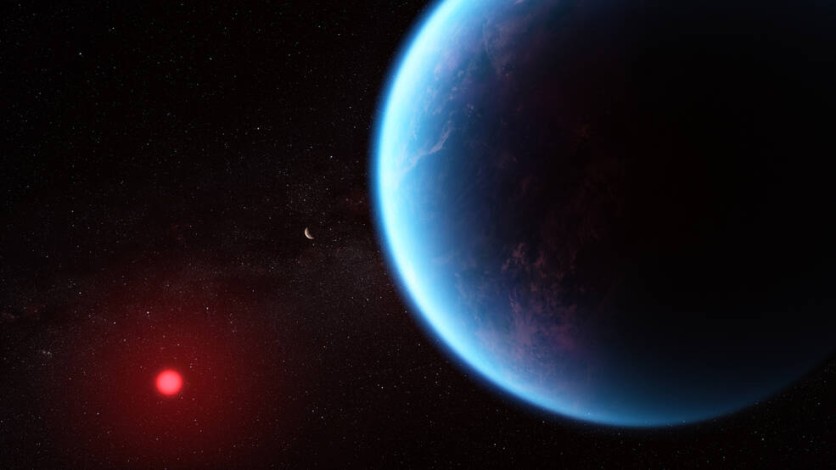NASA's James Webb Space Telescope has made a significant discovery on the exoplanet K2-18 b, which is 8.6 times as massive as Earth. The telescope detected the presence of carbon-bearing molecules, including methane and carbon dioxide, on this intriguing exoplanet.
K2-18 b, located 120 light-years from Earth in the constellation Leo, orbits a cool dwarf star known as K2-18 in the habitable zone. This exoplanet is classified as a "sub-Neptune" due to its size, falling between the size of Earth and Neptune.
Such sub-Neptunes are unique and not found in our solar system, making them subjects of keen interest and debate among astronomers.

NASA James Webb Space Telescope Discovers a Hycean Exoplanet?
According to NASA, the recent discovery suggests that K2-18 b could be a Hycean exoplanet. Hycean worlds are those with hydrogen-rich atmospheres and surface-covered oceans, making them promising candidates for the search for life beyond Earth.
The detection of methane and carbon dioxide, along with the absence of ammonia, supports the idea that K2-18 b might have a hydrogen-rich atmosphere overlying a water ocean.
Furthermore, the telescope's observations hinted at the presence of dimethyl sulfide (DMS), a molecule typically associated with life on Earth. However, this inference requires further validation.
Despite K2-18 b residing in the habitable zone and containing carbon-bearing molecules, it's crucial to recognize that these observations don't guarantee its potential for habitability, according to NASA.
With a radius 2.6 times that of Earth, the exoplanet likely houses a significant layer of high-pressure ice beneath a possible ocean surface. Whether this ocean could sustain life or even exist in liquid form is uncertain.
"Although this kind of planet does not exist in our solar system, sub-Neptunes are the most common type of planet known so far in the galaxy," said team member Subhajit Sarkar of Cardiff University.
"We have obtained the most detailed spectrum of a habitable-zone sub-Neptune to date, and this allowed us to work out the molecules that exist in its atmosphere," Sarkar added.
Habitable-Zone Exoplanets
The endeavor to characterize exoplanet atmospheres similar to K2-18 b is a formidable undertaking, primarily due to the overwhelming brightness of their host stars.
The team surmounted this challenge by scrutinizing the starlight filtering through the exoplanet's atmosphere during its transits. These results represent the beginning of what NASA's James Webb Space Telescope can reveal about habitable-zone exoplanets.
The team plans to conduct further research with the telescope's Mid-Infrared Instrument (MIRI) spectrograph to validate their findings and gain more insights into K2-18 b's environmental conditions.
"Our ultimate goal is the identification of life on a habitable exoplanet, which would transform our understanding of our place in the universe. Our findings are a promising step towards a deeper understanding of Hycean worlds in this quest," said Nikku Madhusudhan, an astronomer at the University of Cambridge and lead author of the study.
Related Article : Happy 1-Year Anniversary! Look Back at NASA's James Webb Space Telescope's Most Awe-inspiring Images Yet

ⓒ 2025 TECHTIMES.com All rights reserved. Do not reproduce without permission.




